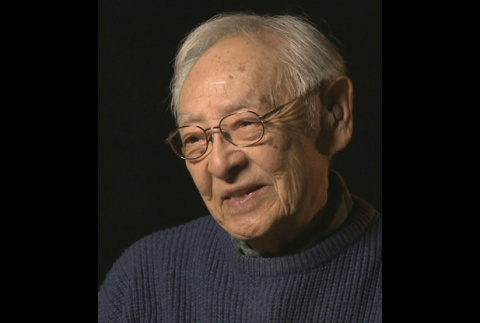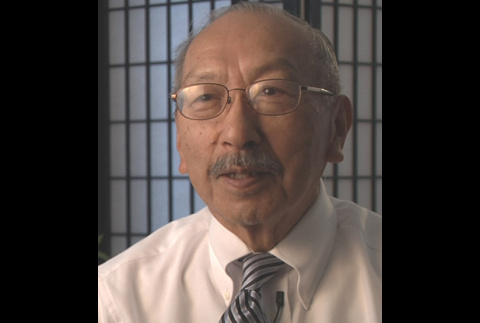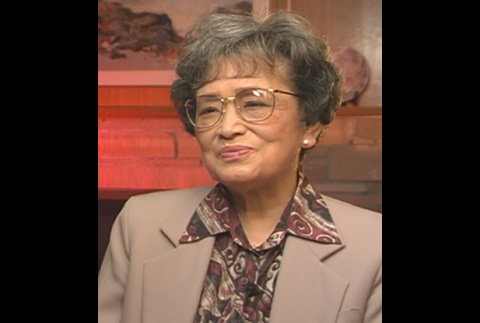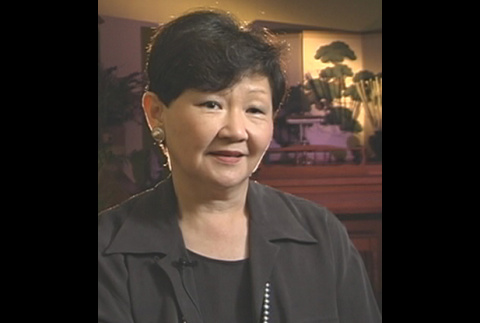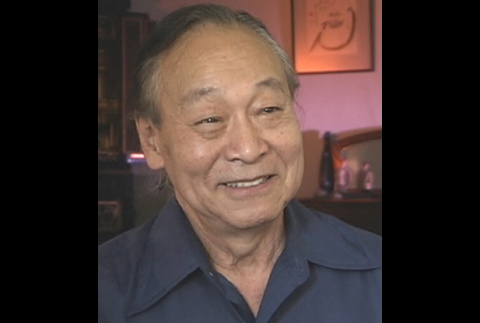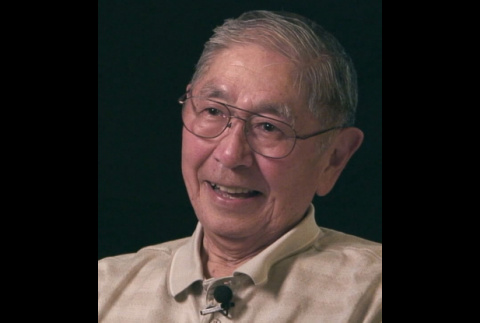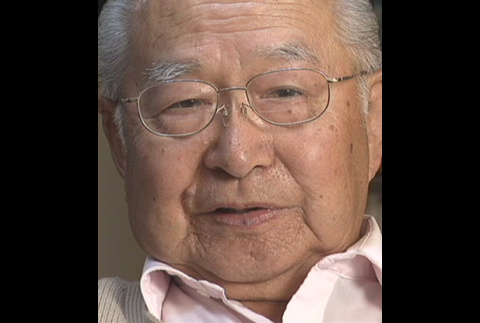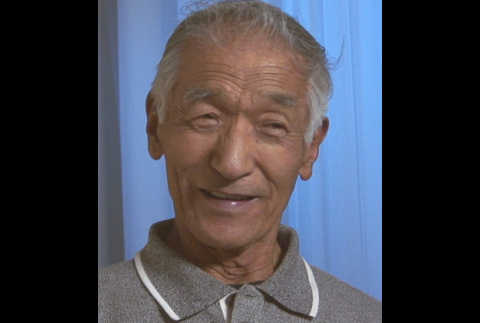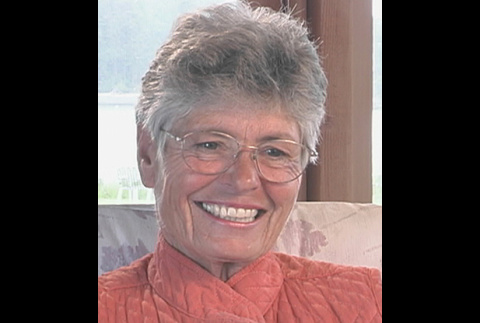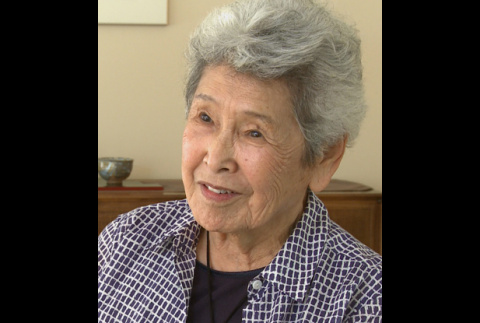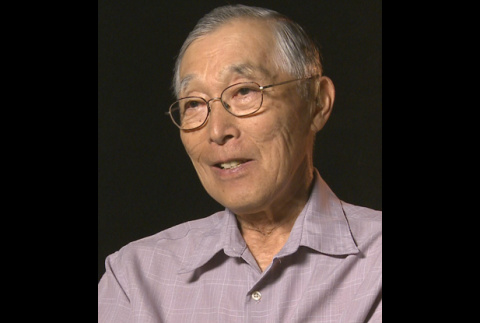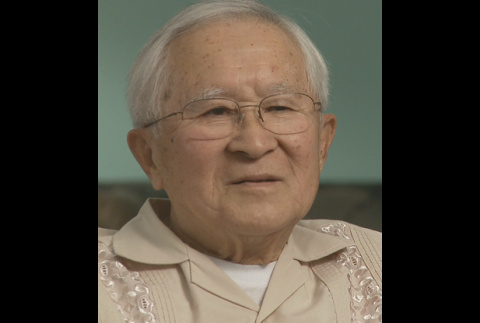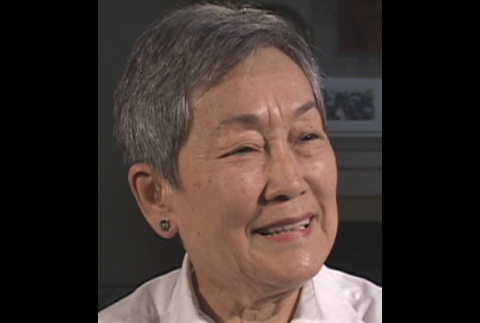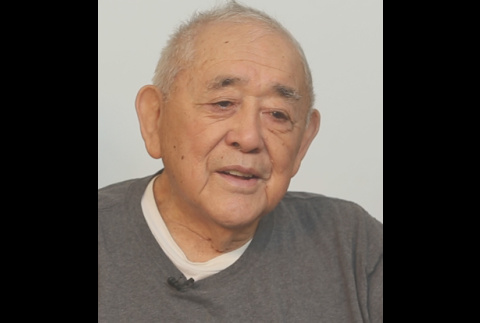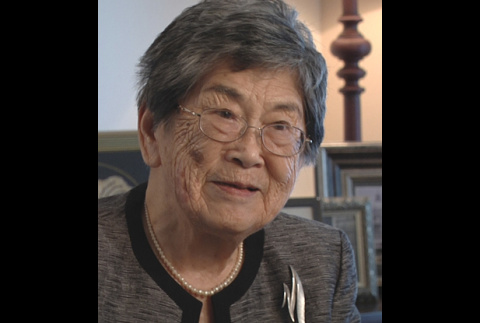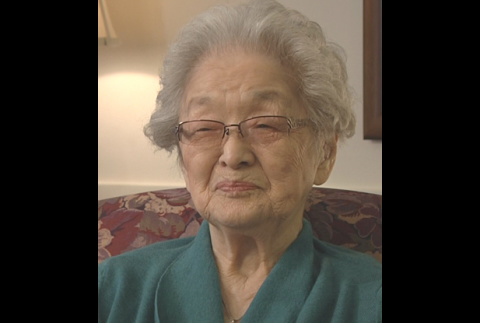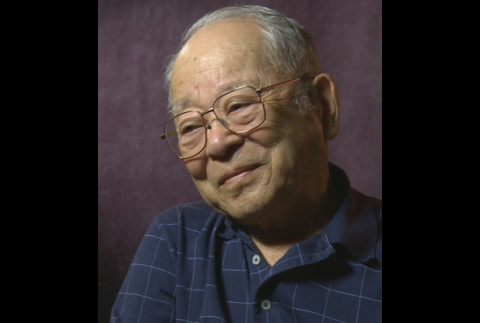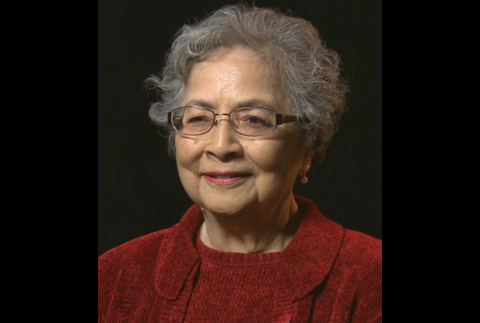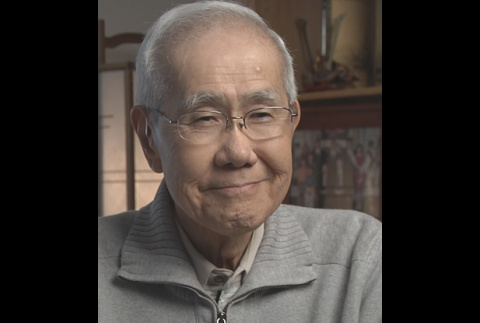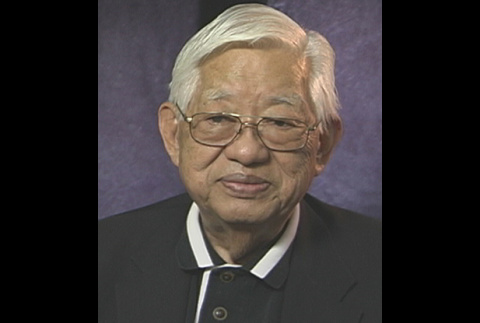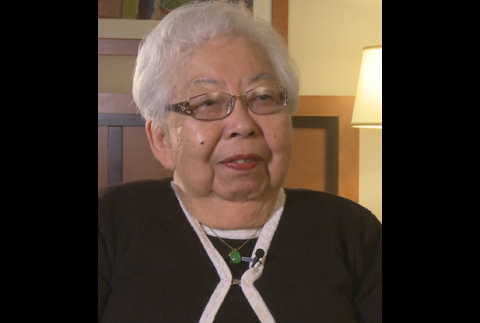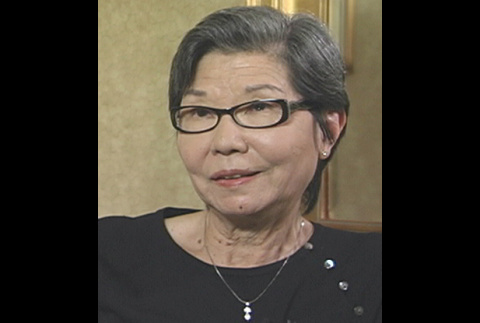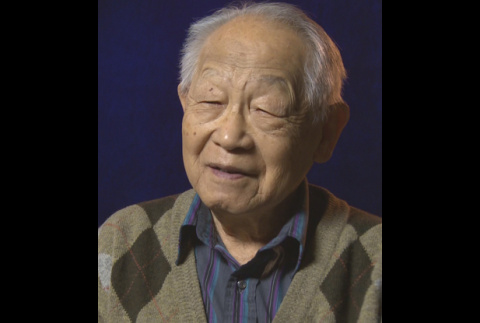1408 items

Narrator Kenji Onishi
Nisei male. Born April 24, 1927, in Portland, Oregon. Grew up in the Portland area, where father worked for the railroad. During World War II, removed to the Portland Assembly Center, Oregon, and the Minidoka concentration camp, Idaho. After leaving camp, served in the military and eventually returned to Portland and became a teacher.

Narrator Shig Oka
Nisei male. Born July 28, 1930, in Portland, Oregon. Grew up in Portland, where father worked for the railroad and then as an apartment building owner. During World War II, removed to the Portland Assembly Center, Oregon, and the Minidoka concentration camp, Idaho. After leaving camp, returned to Portland, completed school, and became a pharmacist.

Narrator Cherry Kinoshita
Nisei female. Born October 13, 1923, in Seattle, Washington, and grew up in the Green Lake area. Incarcerated at the Puyallup Assembly Center, Washington, and Minidoka concentration camp, Idaho. Active in National and Seattle Chapter Japanese American Citizens League politics, especially during the drive for redress in the 1970s and 1980s.

Narrator May K. Sasaki
Nisei female. Born May 31, 1935, in Seattle, Washington. Spent prewar years in Seattle's Nihonmachi, or Japantown. Incarcerated as child at Puyallup Assembly Center, Washington, and Minidoka concentration camp, Idaho. Resettled in Seattle. In her interview, discusses issues of shame and loss of Japanese American identity as a result of incarceration.

Narrator Frank Yamasaki
Nisei male. Born January 26, 1923, in Seattle, Washington. Spent prewar childhood in South Park and Belltown areas of Seattle. Incarcerated at the Puyallup Assembly Center, Washington and Minidoka concentration camp, Idaho. Refused to participate in draft, imprisoned at McNeil Island Penitentiary, Washington, for resisting the draft. Resettled in Seattle.

Narrator Katsumi Okamoto
Nisei male. Born July 5, 1926, in Seattle, Washington. Grew up in Seattle, where parents owned and operated a grocery store. Following the bombing of Pearl Harbor, removed to Puyallup Assembly Center, Washington, and Minidoka concentration camp, Idaho. Served in Japan with the Military Intelligence Service following World War II.

Narrator Victor Takemoto
Nisei male. Born October 27, 1926, in Bainbridge Island, Washington. Parents were strawberry farmers before World War II. After the bombing of Pearl Harbor, removed with family to Manzanar concentration camp, California. Unlike most Bainbridge Island Japanese Americans, did not transfer to the Minidoka, Idaho, concentration camp. Returned to Bainbridge Island after the war, and attended …

Narrator Eddie Owada
Nisei male. Born December 22, 1925, in Tacoma, Washington. Grew up primarily on Vashon Island, Washington. Removed to the Pinedale Assembly Center and the Tule Lake concentration camp, Washington, later transferring to the Minidoka concentration camp, Idaho. Drafted into the army and served with the Military Intelligence Service. Worked for the U.S. Forest Service and eventually …

Narrator Connie Thorson Chandler
White female. Born 1938 in Denver, Colorado. Father worked for the Bureau of Reclamation at the time WWII broke out, so family lived in Minidoka concentration camp, Idaho, in 1942. Mrs. Chandler was a child at the time, and attended elementary school in Minidoka. Moved to Twin Falls for junior high and high school years before …

Narrator Mary Kinoshita Ikeda
Nisei female. Born May 18, 1927, in Seattle, Washington. Grew up in Seatle, where father wsa the head bellboy at an exclusive club. Attended the Maryknoll Catholic school in Seattle prior to World War II. During World War II, removed to the Puyallup Assembly Center, Washington, and the Minidoka concentration camp, Idaho. While at Minidoka, brother …

Narrator Lillian Horita
Nisei female. Born November 9, 1929, in Portland, Oregon. Grew up in Portland, where parents ran a cleaning business. During World War II, removed to the Portland Assembly Center, Oregon, then to the Tule Lake concentration camp, California. Transferred to the Minidoka concentration camp, Idaho. Left camp to attend school in Des Moines, Iowa, before eventually …

Narrator Tosh Tokunaga
Nisei male. Born January 2, 1925, in Selleck, Washington. Grew up in the Selleck logging camp before moving with family to Seattle, Washington, for high school. During World War II, removed to the Puyallup Assembly Center, Washington, and Minidoka concentration camp, Idaho. Volunteered for the military as a paratrooper, and served in Europe. Eventually returned to …

Narrator Don Maeda
Nisei male. Born November 28, 1924, in Seattle, Washington. Grew up in Seattle prior to World War II. During the war, removed to the Puyallup Assembly Center, Washington, and the Minidoka concentration camp, Idaho. Drafted into the military while in camp and received a deferrment in order to help relocate family. Resettled in St. Paul, Minnesota.

Narrator Mae Hada
Nisei female. Born July 5, 1922, in Portland, Oregon. Grew up in Portland where father owned a clothing store. During World War II, removed to the Portland Assembly Center, Oregon, and the Minidoka concentration camp, Idaho. After leaving camp, lived for a time in Ames, Iowa, and Detroit, Michigan, before returning to Oregon and raising a …

Narrator George Tsugawa
Nisei male. Born June 20, 1921, in Everett, Washington. Grew up primarily in Hillsboro, Oregon, where family ran a produce business and farm. During World War II, removed with family to the Portland Assembly Center, Oregon, and the Minidoka concentration camp, Idaho. After leaving camp, returned to Oregon and eventually moved to Woodland, Washington, establishing a …

Narrator Ami Kinoshita
Nisei female. Born October 3, 1919, in Enumclaw, Washington. Family moved to Nahcotta, Washington, and ran an oyster farm. Married prior to World War II and lived on husband's family's farm in Gresham, Oregon. During the war, removed to the Portland Assembly Center, Oregon, and the Minidoka concentration camp, Idaho. After leaving camp, returned to Gresham.

Narrator Sumi Ikata
Nisei female. Born March 3, 1918, in Portland, Oregon. Grew up in Independence, Oregon, where parents ran a farm. Married and was pregnant with first child before World War II. During the war, was removed to the Portland Assembly Center, Oregon, and the Minidoka concentration camp, Idaho. After leaving camp, returned to the Gresham, Oregon, area.

Narrator Frank Shinichiro Tanabe
Nisei male. Born on August 10, 1919, in Osaka, Japan. Attended college at the University of Washington before being removed to the Puyallup Assembly Center, Washington, and the Tule Lake concentration camp, California. Established Tule Lake's newspaper, the Tulean Dispatch. Transferred to the Minidoka concentration camp, Idaho, before resettling in Chicago. Drafted into the Military Intelligence …

Narrator Sab Akiyama
Nisei male. Born April 7, 1924, in Oak Grove, Oregon. Grew up in the Hood River, Oregon, area, where parents ran a farm. During World War II, was removed to the Pinedale Assembly Center, California, and the Tule Lake concentration camp, California, and Minidoka concentration camp, Idaho. Volunteered to serve in the U.S. Army during the …

Narrator Setsu Tsuboi Tanemura
Nisei female. Born February 28, 1930, in Portland, Oregon. After losing mother at age two, went to live with a Swedish family until age nine. After the bombing of Pearl Harbor, removed to the Portland Assembly Center, Oregon, and the Minidoka concentration camp, Idaho. Returned to Portland to finish school following World War II.

Narrator Albert A. Oyama
Nisei male. Born April 10, 1926, in Portland, Oregon. Grew up in Montavilla, Oregon, where father ran a Japanese-language newspaper. During World War II, removed to the Portland Assembly Center, Oregon, and the Minidoka concentration camp, Idaho. After the war, served in Korea in the U.S. military. Returned to Oregon and became a physician.

Narrator Ed Tsutakawa
Nisei male. Born May 15, 1921, in Seattle, Washington. Spent much of childhood in Japan, returning to the U.S. at the age of fifteen. Began attending the University of Washington before being removed to Puyallup Assembly Center, Washington, and Minidoka concentration camp, Idaho. Created a series of art pieces depicting camp life. Moved to Spokane, Washington, …

Narrator Hannah Lai
Nisei female. Born April 11, 1923, in Seattle, Washington. Grew up in Seattle, where parents ran a hotel. Went to live in Japan for several years prior to World War II. During the war, removed to the Puyallup Assembly Center, Washington, and the Minidoka concentration camp, Idaho. While in Minidoka, recruited to teach elementary school, and …

Narrator Fumi Kaseguma
Nisei female. Born April 20, 1924, in Portland, Oregon. Spent one summer in Japan just before the onset of war between the U.S. and Japan. Incarcerated at the Portland Assembly Center, Oregon, and the Minidoka concentration camp, Idaho. Left camp as part of the National Youth Administration, and worked in Salt Lake City, Utah, and Chicago, …

Narrator Tadashi Kuniyuki
Nisei male. Born August 12, 1912, in Seattle, Washington. Grew up in Seattle, where parents owned a series of hotels. Graduated from the University of Washington prior to World War II. During the war, was removed to the Puyallup Assembly Center, Washington, and the Minidoka concentration camp, Idaho. After leaving camp, lived in Spokane, Washington, for …
